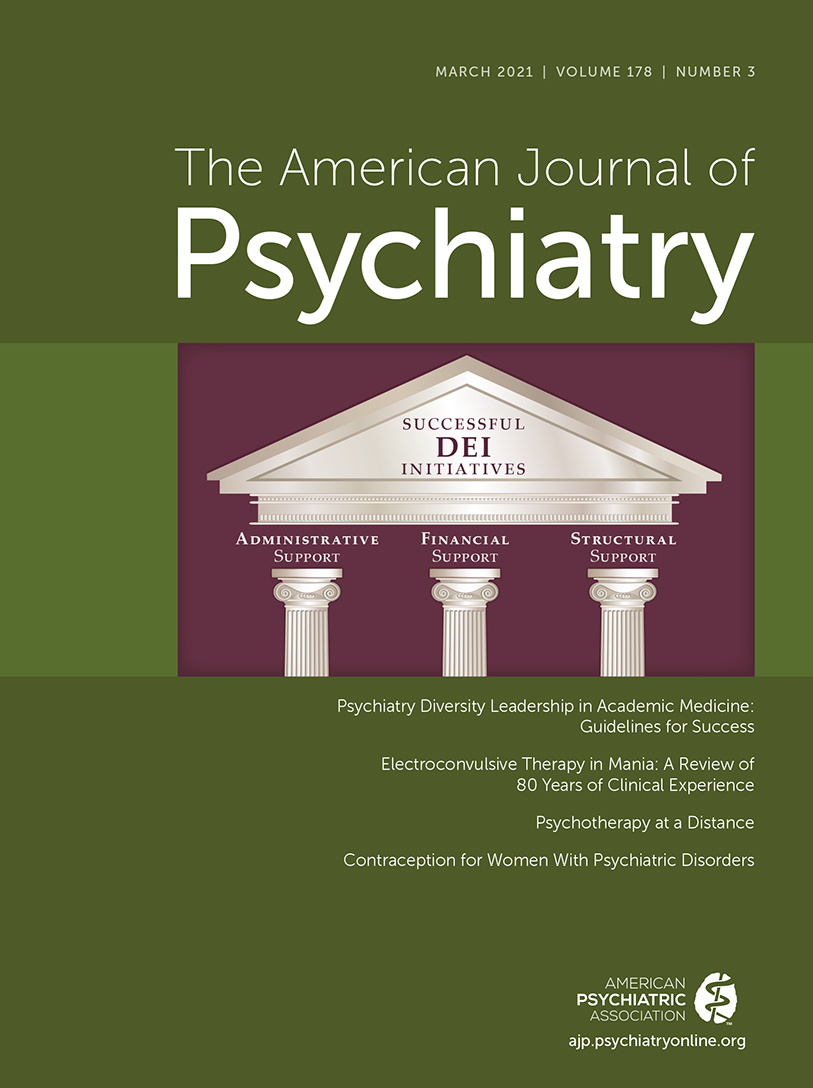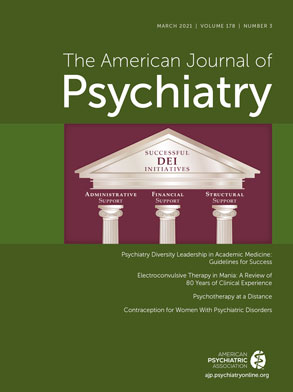Medicine in general, and psychiatry in particular, has had a long, ambivalent relationship with women’s mood disorders. From the attribution of maladaptive behaviors to a wandering uterus (hysteria) to the ascription of both toxic and therapeutic powers to menstrual blood, beliefs about the impact of reproductive physiology on mood regulation largely took the form of superstition, stereotype, ridicule, and invective. Despite myriad descriptive reports dating to antiquity of women’s reproductive-related mood disorders, their existence was met with irrational skepticism: if the disorder is not experienced by all women, it must not exist. Recapitulating misogyny in medicine, our nosology refused to admit several women’s reproductive-related mood disorders into the hallowed halls of DSM long after epidemiological studies had clearly demonstrated the impact of these disorders and the U.S. Food and Drug Administration had approved medication specifically for one of them, premenstrual dysphoric disorder (PMDD).
In this month’s issue, Comasco et al. (
1) present findings on a novel therapeutic approach to PMDD. The authors describe a 3-month multicenter proof-of-concept randomized placebo-controlled trial of ulipristal acetate (UPA) in 95 women with PMDD. UPA is a selective progesterone receptor modulator—functionally, a receptor antagonist—that has been used to treat uterine fibroids. The mean improvement in symptom severity on the Daily Record of Severity Problems (DRSP), a rating scale often used in studies of PMDD, relative to baseline was greater in the UPA group (43% and 41%) compared with the placebo group (27% and 22%) at the two time points selected for analysis. (As UPA often disturbs menstrual cycle function, the time points selected to test efficacy were the 5 days before the last two bleeds or during the last week of active treatment if the participant developed amenorrhea.) Significant improvement was also seen on two DRSP subscales (depression and anger/irritability) as well as in remission rates (50% compared with 21%), but not in the DRSP physical symptom subscale or in the secondary, cross-sectional measures of depression and quality of life. Given the distribution of progesterone receptors in brain regions critical for mood regulation, the authors conclude that progesterone receptor blockade with UPA or subsequent selective progesterone receptor modulators may represent unique and effective treatment options for PMDD. These interesting findings raise three questions.
Why in the World Would Anyone Study (Or Care About) PMDD?
PMDD’s prevalence (about 5% of women) and morbidity (14.5 million disability-adjusted life-years lost annually in the United States—equivalent to major depression) should make evident the clinical need (
2). Beyond the readily apparent need, however, one can argue that PMDD offers us the best opportunity to understand two of the critical variables in affective disorders, namely, the switch to a different affective state and differential susceptibility to disorders of affective regulation.
By state, I mean a coherent, replicable, integrated, self-organized assembly of thoughts, associations, memories, cognitions, perceptions, and ways of relating to self and others (self and object relations) (
3). States are programs for interpreting and interacting with our environment in an efficient fashion. We all have them and rely on our ability to induce or change them, through the morning run, the evening beer, social events, meditation, sex, drugs, and rock ‘n’ roll.
Thinking about behavior in this fashion offers at least one major advantage: it draws attention to the kinetics of disorders, rather than myopically focusing on symptoms. Depression, for example, is as much characterized by the persistence of the affective state as it is by any of its symptoms (which can be assembled in over 500 different ways to reach the same diagnosis) (
4). The state model suggests that our understanding of the neurobiology of affective disorders may be better served by studying the transitions between affective states—the switch—rather than the state itself, given homeostatic responses that may obscure the source of the mood destabilization. The importance of the switch as a clue to the biology of affective illness was described by Bunney et al. 50 years ago (
5), and the associated neural changes “that may precede the behavioral changes” were called “the Holy Grail of bipolar disorder research” (
6). Unfortunately, examination of the switch process in affective disorders is complicated by its unpredictability (
7).
This problem is solved in PMDD. In PMDD, it is the timing of the symptoms—confined to the luteal (premenstrual) phase—that defines the disorder, not the presence of any specific symptom. The switch occurs (particularly the switch out) with relative predictability each month, thus lending itself well to investigation. PMDD may further inform us about affective regulation because the changes in affective state are linked to a specific, detectable set of physiological processes, namely, the menstrual cycle. Association obviously does not necessarily entail causation. But in the case of PMDD, it does. As reviewed by Comasco et al., studies have demonstrated that ovarian steroids are the triggering events in the onset of PMDD: suppression of ovarian steroids prevents the switch into the PMDD symptomatic state, which is then precipitated when the steroids are blindly reintroduced. Notably, identical manipulations of ovarian steroids in women without PMDD have no effect on mood. Unlike mood disorders accompanying endocrinopathies, women with PMDD do not have abnormal hormone levels, but rather show an abnormal response to normal changes in ovarian steroids.
Similar evidence for this differential sensitivity to ovarian steroids in women with PMDD is seen in brain imaging studies (
8) and even at the cellular level. In lymphoblastoid cell lines from women with PMDD and control subjects, Dubey et al. (
9) found both increased baseline expression of 11 of 13 genes and differential response to exposure in vitro to ovarian steroids in the ESC/E(Z) (Extra Sex Combs/Enhancer of Zeste) complex pathway. This gene family is responsible for regulating epigenetics, the ultimate mechanism for translating environmental signals into enduring changes in gene expression in response to environmental signals. Thus, compared with major depression, PMDD is considerably farther down the road in our understanding of the critical physiologic factors underlying both the triggering of different affective states and the susceptibility that results in a different behavioral response to the same physiologic stimulus.
Why Would We Think That Reproductive Steroids Would Regulate Behavior?
Psychiatry has had a long-standing love affair with the stress steroid cortisol, with relatively little interest in its precursor, progesterone, or its cousins, estrogens and androgens. Yet, absent the ability of reproductive steroids to powerfully regulate at least one complex motivational state—sexual attraction/action—the species would die out. Indeed, reproductive steroids are informational molecules that “by design” generate behavioral states by acting centrally to integrate a wide array of peripheral actions, perceptions, and behaviors. Not surprisingly, then, reproductive steroids regulate and orchestrate virtually every element of cell signaling, including transcription and translation, and influence every system ever implicated in the etiopathogenesis of depression (from individual neurotransmitter systems and neuroplasticity/neuroprotection to neural network function) (
10).
Progesterone, one of the ovarian steroids least studied by psychiatrists and neuroscientists, is the target of the approach adopted by Comasco et al. Despite the prevalent belief 30 years ago that progesterone was unlikely to have any CNS effects because, supposedly, its only role was to antagonize estrogen signaling in the uterus, evidence for the importance of progesterone signaling in behavioral regulation is substantial. In addition to already mentioned data supporting the ability of progesterone administration to precipitate the dysphoric state of PMDD, Hans Selye, the father of stress research, observed in 1941 that intravenous or intramuscular progesterone rapidly induced anesthesia, with analgesic, anxiolytic, antistress, and antiseizure effects subsequently noted (
11). These rapid effects were later discovered to result largely from a progesterone metabolite, allopregnanolone, a neurosteroid that positively modulates GABA receptor activity, thus increasing both synaptic and extrasynaptic cortical inhibition (
12).
The role of allopregnanolone in PMDD is suggested by recent studies showing prevention of the appearance of PMDD symptoms by either administration of an allopregnanolone antagonist (sepranolone, an isomer of allopregnanolone) (
13) or blockade of the metabolism of progesterone to allopregnanolone with dutasteride (
14). Since allopregnanolone (brexanolone) administration has been approved as a treatment for postpartum depression (
15), why would allopregnanolone antagonism prevent symptoms of PMDD? Apart from the obvious—that women’s reproductive-related mood disorders are not all the same—sepranolone and dutasteride also stabilize allopregnanolone signaling. As such, their efficacy is consistent with observations that changes in hormone levels (as opposed to the levels themselves) are important regulatory signals, a well-described phenomenon in the form of fast-rate feedback of ACTH secretion (
16) or pulsatile frequency-dependent actions of gonadotropin hormone-releasing hormone on gonadotropin release (
17). Prevention of variable hormone signaling is a plausible mechanism of action of UPA in PMDD: As a negative progesterone receptor modulator, UPA not only blocks signaling through the progesterone receptor but also prevents ovulation, thereby stabilizing levels of estradiol, progesterone, and allopregnanolone. (Anovulation, unfortunately, also compromises the study blind by disrupting normal menstrual cycle function.)
Should Hormonal Therapeutics Be Part of the Psychiatric Armamentarium?
An answer in the affirmative is suggested by the findings with UPA, as well as the demonstrated efficacy of brexanolone in postpartum depression and estradiol in perimenopausal depression (
18). UPA has the added advantage of its demonstrated use and safety in women with fibroids. Additionally, since more than one-third of the participants in the Comasco et al. study had taken antidepressants in the past and stopped for nonresponse, it is possible that UPA could be of benefit in patients who fail to benefit from trials of an SSRI. Further, it illustrates the therapeutic potential for hormone selective receptor modulators. These compounds, which include selective estrogen (and androgen) receptor modulators, often display tissue specificity because of their critical interactions with tissue-specific coregulators, thus conceptually allowing the development of modulators that would have few if any off-tissue-target effects.
Potential problems with study blinding notwithstanding, the findings of Comasco et al. clearly deserve replication and are of both clinical and heuristic appeal. They join a growing body of evidence supporting the relevance of reproductive hormones in the triggering of PMDD. They expand the therapeutic footprint of selective hormone receptor modulators, a class of compounds with exceptional potential for advancing the goals of precision medicine. And they underscore the importance of ensuring that current and future psychiatrists are as attentive to the role of reproduction and reproductive hormones in regulation of affective state as they are to stress and stress hormones.

